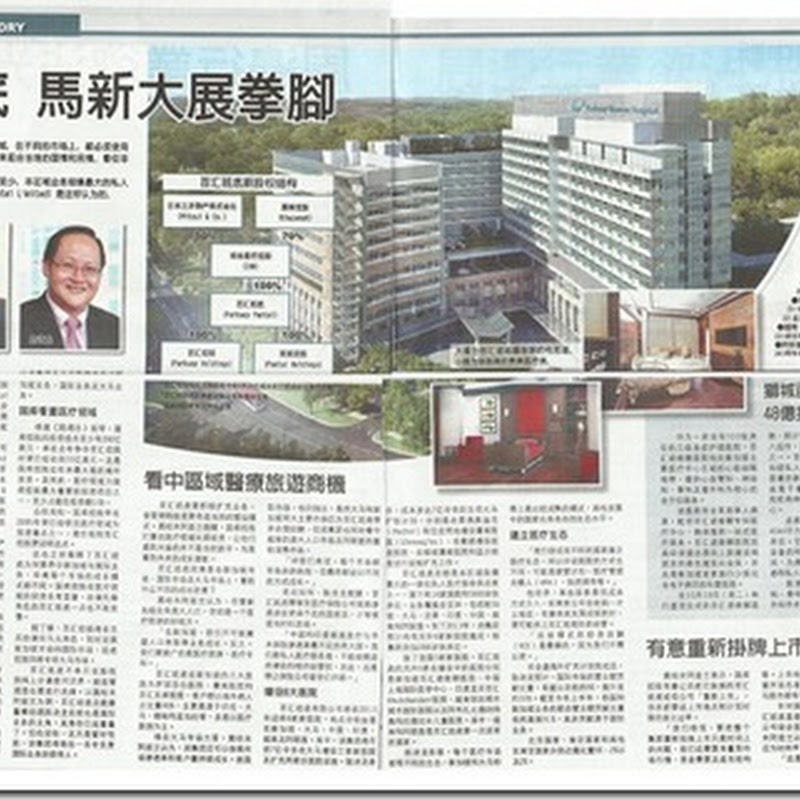THREE-A-RESOURCXES 2QE Jun 2009 Net Profit was RM5.5m - up 17.6% YoY and Turnover was 2.4% higher at RM45.2m. The Company said that the better performance was to to higher demand for its food ingredient products. This latest set of results was 3A's strongest quarterly earnings since the Company's listing in 2002.
Demand for end-consumer products that use 3A's ingredients is relatively recession-proof. Sales were affected in 2H-CY2008 and 1Q-CY2009 due to the China-originated melamine scandal ? which hurt consumer demand for milk products and confectionery ? and then by the global credit crisis. The latter saw many end-user companies cutting back on new purchases to run down inventory.
Rebuilding of inventories are believed to have accounted for the stronger demand in 2QE Jun 2009.
UNTAPPED DOMESTIC MARKET
In a research note by INSIDERASIA released on Aug 25, 2009, the Company said that 3A " .... is filling orders for its newly commissioned 7,000-tonne per month glucose plant at a good pace. The glucose plant is already running at about 40%-50% capacity, since its completion in 4QE CY2008 .... The availability of additional glucose feedstock has also upped utilisation at its maltodextrin plant, which is now running at almost full capacity. Previously, limited feedstock had kept production at jus about half of its 1,200 tonnes per month capacity ....".
MALTOSE/DEXTRIN PRODUCTS FOR CONFECTIONARY/ICE CREAMS & PHARMACEUTICALS
INSIDERASIA added that the ability to ramp up utilisation fairly quickly strongly suggests that the domestic market for glucose and maltodextrin is still vastly untapped. 3A is the leading producer for glucose and maltose syrup ? used as sweeteners in the food industry such as confectionery, pharmaceutical, ice cream, biscuit and beverages ? in the country. The Company's maltodextrin plant is the only one in Malaysia. Prior to its entry into the market ? in mid-2007 ? all of the maltodextrin consumed locally was imported.
Proximity to end-user companies gives 3A a strong home ground advantage. Its maltodextrin is also competitively priced against those imported from the U.S. and Europe. Maltodextrin is a white powder with little sweetness, has a bland taste and is widely used as fillers or bulking agent.
Initially, the Company focused on, and has been quite successful in tapping into, the 3-in-1 dry beverage mixes market segment. It is now turning to other segments of the maltodextrin market, such as the infant milk powder industry.
Following positive feedback from end-users, both local and in the region, the Company is now planning to set up another maltodextrin plant capable of producing up to 2,000 tonnes per month. As a stopgap measure, 3A intends to upgrade its existing maltodextrin plant, which would boost output up to 1,500 tonnes per month, to cater to rising demand.
EXPORT MARKET
The Company had enjoyed export success and ensures that all of its production processes meet the stringent quality requirements of the food industry. It has a good reputation and track record after being in the business for more than three decades.
3A exports its products to countries such as Korea, Taiwan, Singapore, Australia and the Philippines. Exports currently account for about one-third of the Company's sales. In short, its longer-term growth prospects ? driven by both domestic and overseas demand ? are very good.
INSIDERASIA is of the view that double-digit growth is possible in the next 3 to 4 years. INSIDERASIA also expects the Company's new maltodextrin plant to be ready by 4Q-CY2010.
GLUCOSE / CARAMEL FEEDSTOCK SUPPLY
Additional feedstock requirement for the new maltodextrin plant was already taken into account when 3A was building its glucose plant in 2008. The glucose plant, with current capacity of 7,000 tonnes per month can easily be upgraded to produce up to 12,000 tonnes per month with the incurrence of just a small additional capex.
The Company recently acquired a piece of land adjacent to its factory in Sungai Buloh, Selangor, for expansion purposes. The land could be used to ramp up its caramel production capacity within a fairly short lead time as 3A can leverage on existing support infrastructure.
LOWER SELLING PRICES TO BE OFFSET BY VOLUME
INSIDERASIA estimates Volume sales growth for its ingredient products to more than offset lower average selling prices of about 10%-15% from the peak in 2008, in line with lower commodity and raw material prices.
IMPROVED PLANT EFFICIENCY
Improved utilisation and economies of scale will also boost profitability. In particular, higher sales for glucose and maltodextrin are likely to have contributed to 3A's improved margin in 2QE Jun 2009.
OPERATING MARGINS
Glucose and maltodextrin are believed to be relatively higher-margin products within the Company's product range, which also includes caramel colour, soy protein sauce and natural fermented vinegar. Operating Margin rose to 19.8% compared with 17.4% and 13.9% in 2Q08 and 1Q09, respectively.
INSIDERASIA estimates Net profit for the FYE Dec 2009 to be at RM14.8m, up 22% YoY. Sales growth should pick up pace in 2010 when Net Profit is estimated to expand to RM17.5m.
DIVIDENDS RECORD
3A offers fairly decent yields. 3A paid dividends totalling one sen per share in 2008. Assuming a similar payout level, dividends are estimated to rise to 1.2 sen per share for 2009, which translate into a 2.2% Net Yield. Going forward, we expect dividends will trend higher in line with its earnings growth.
NET DEBT OF RM13.5M
As at end Jun 2009, the Company had Net Debt of RM13.5m which is well placed to support the Company's expansion plans. Net Tangible Assets recorded 27 sen per share.
Revolution – How One Man Rallies Iranians To The Street
-
Pahlavi was just 18 years old and in the U.S. training to be a jet fighter
pilot when the revolution that ousted his father – Iran’s last Shah
Mohammad R...
7 hours ago





















































No comments:
Post a Comment